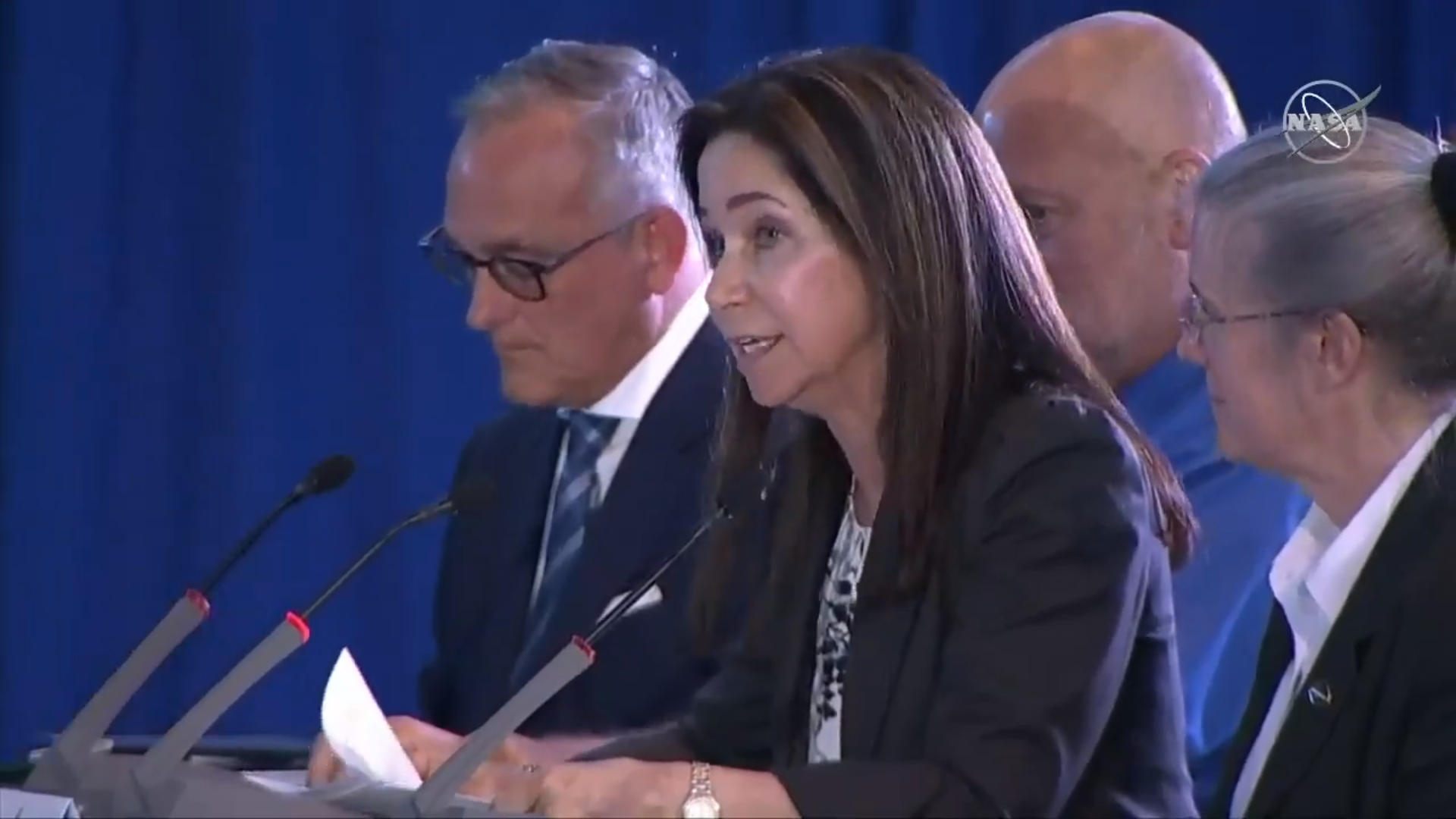If NASA Wants to Land the 1st Woman on the Moon, Her Spacesuit Better Fit
The NSC discussed specific needs of a diverse astronaut crew.
As NASA aims to land the first woman on the moon, the agency will have to consider how prepared it may be for supporting a more diverse astronaut crew.
The National Space Council (NSC) convened for the sixth time this morning (Aug. 20). In a conversation led by Saralyn Mark, founder and president of iGIANT and SolaMed Solutions LLC, the panel addressed how NASA might handle the increasing inclusion of women and overall diversity in future crewed flights.
"It's more than spacesuits not fitting female astronauts," Mark said, referencing the canceled would-be all-female spacewalk from earlier this year. "We see the impact from the shoes and clothing we wear, the electronic devices we use, the cars we drive in and even the medications we take. Modifying appearances, or the 'pink it, shrink it' approach for gendered innovation will never work in any environment including space, battlefields, hot zones and in our homes."
Related: Women in Space: A Gallery of Firsts

Previously, Mark has spoken about diversifying astronaut crews with regard to missions to Mars. She has said, which she referenced during the NSC meeting, that while more diverse crews may need to put in more effort initially to understand each other's differences, in the long run, groups diverse in gender, race, ethnicity, culture and more operate better. With a wider range of backgrounds, diverse groups have a larger frame of reference that allows them to develop solutions to problems from different angles.
Mark noted at the meeting that all genders have unique requirements both on Earth and when it comes to human spaceflight. People of different genders "adapt to space differently where even small differences significantly impact the quality and safety of life, including astronaut work performance. It is imperative that Nasa and its commercial space partners address these differences and how they plan and conduct missions, how they develop products such as spacesuits, high-performance clothing including liquid cooling and ventilation garments, tools, hardware and machine-human interfaces," Mark said.

She added that, according to some studies, male astronauts experience more severe symptoms of spaceflight associated neuro-ocular syndrome (SANS), while female astronauts are more susceptible to radiation-induced cancer, which lowers their permissible radiation exposure limits. Currently, there are no studies that have explored the effects of human spaceflight on intersex or transgender people.
Get the Space.com Newsletter
Breaking space news, the latest updates on rocket launches, skywatching events and more!
Mark emphasized her points by relating NASA's Artemis program to Apollo. Apollo inspired countless people around the world to develop an interest in spaceflight and pursue careers in science, technology, engineering and math (STEM) fields. Mark asserted that the same should happen with Artemis, because it can. "I want to believe that the next boots on the lunar surface will be worn by a woman and not only will they fit her, but they will also inspire the next generation of explorers," she said.
U.S. Vice President Mike Pence, who chaired the NSC meeting, weighed in on the topic as the meeting came to a close.
"We have opportunities to really celebrate that diversity," Pence said. "But," he added, "it's imperative that NASA and our private sector partners lean in clear-eyed and account for the unique differences and challenges that men and women face in space exploration. And I pledge to you that we will do just that."
- The Spacewalks of Expedition 59 in Photos
- 'Make Another Suit,' Clinton Tells NASA
- Astronaut Anne McClain Loves Aidy Bryant's Take
Follow Chelsea Gohd on Twitter @chelsea_gohd. Follow us on Twitter @Spacedotcom and on Facebook.
Join our Space Forums to keep talking space on the latest missions, night sky and more! And if you have a news tip, correction or comment, let us know at: community@space.com.

Chelsea “Foxanne” Gohd joined Space.com in 2018 and is now a Senior Writer, writing about everything from climate change to planetary science and human spaceflight in both articles and on-camera in videos. With a degree in Public Health and biological sciences, Chelsea has written and worked for institutions including the American Museum of Natural History, Scientific American, Discover Magazine Blog, Astronomy Magazine and Live Science. When not writing, editing or filming something space-y, Chelsea "Foxanne" Gohd is writing music and performing as Foxanne, even launching a song to space in 2021 with Inspiration4. You can follow her on Twitter @chelsea_gohd and @foxannemusic.









